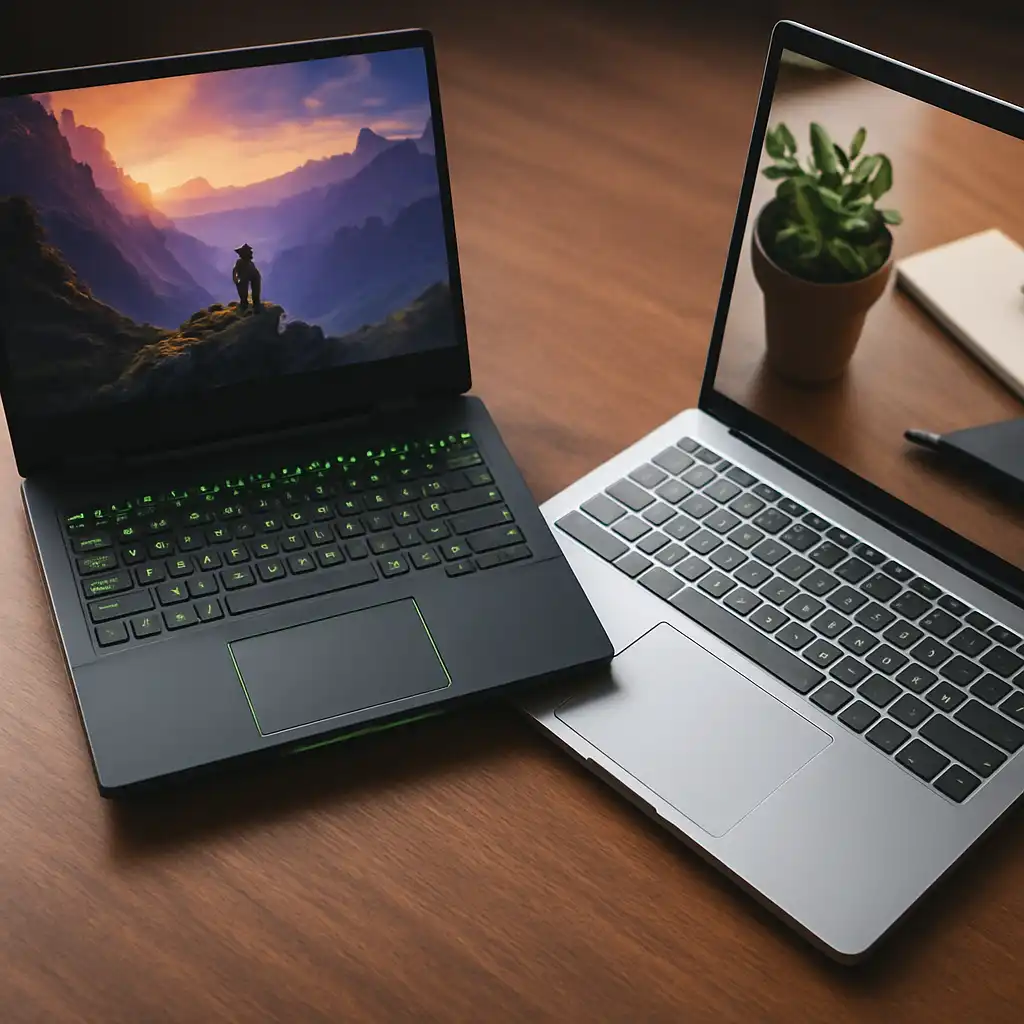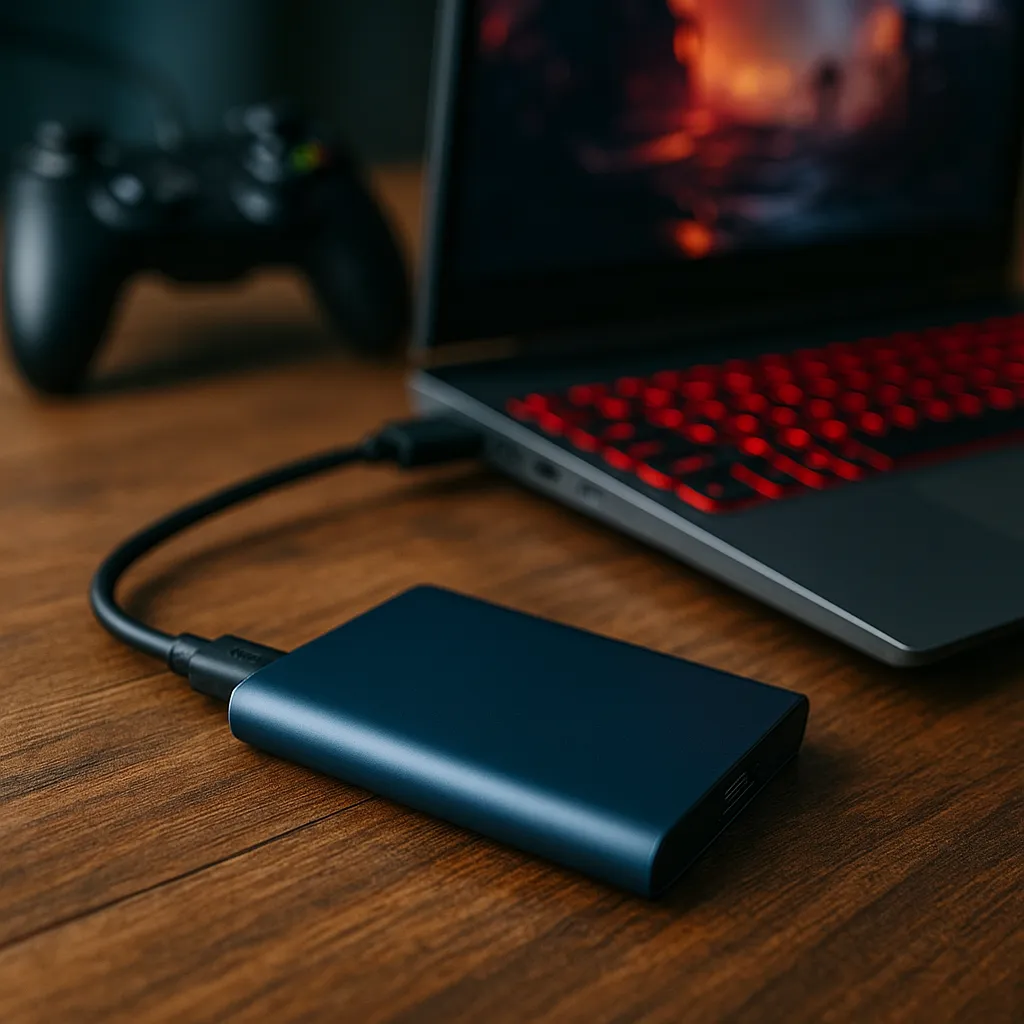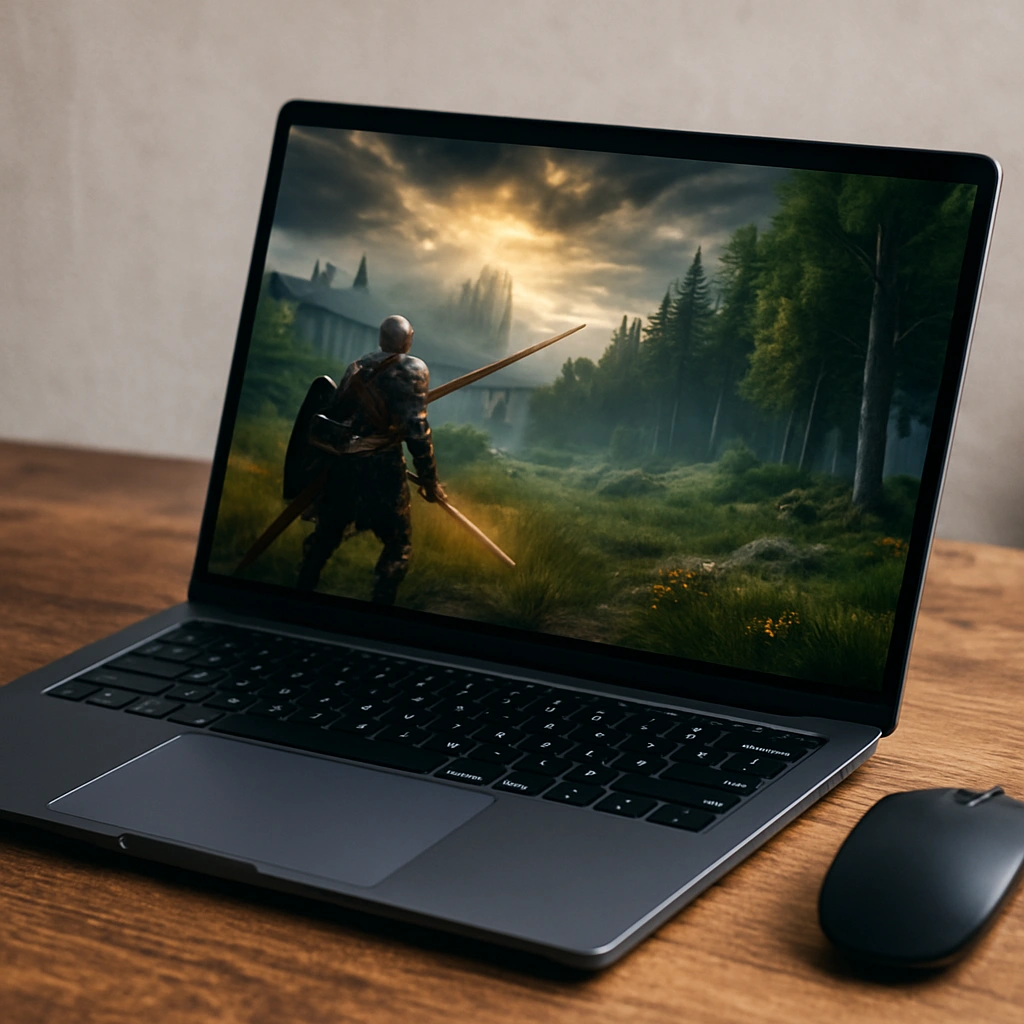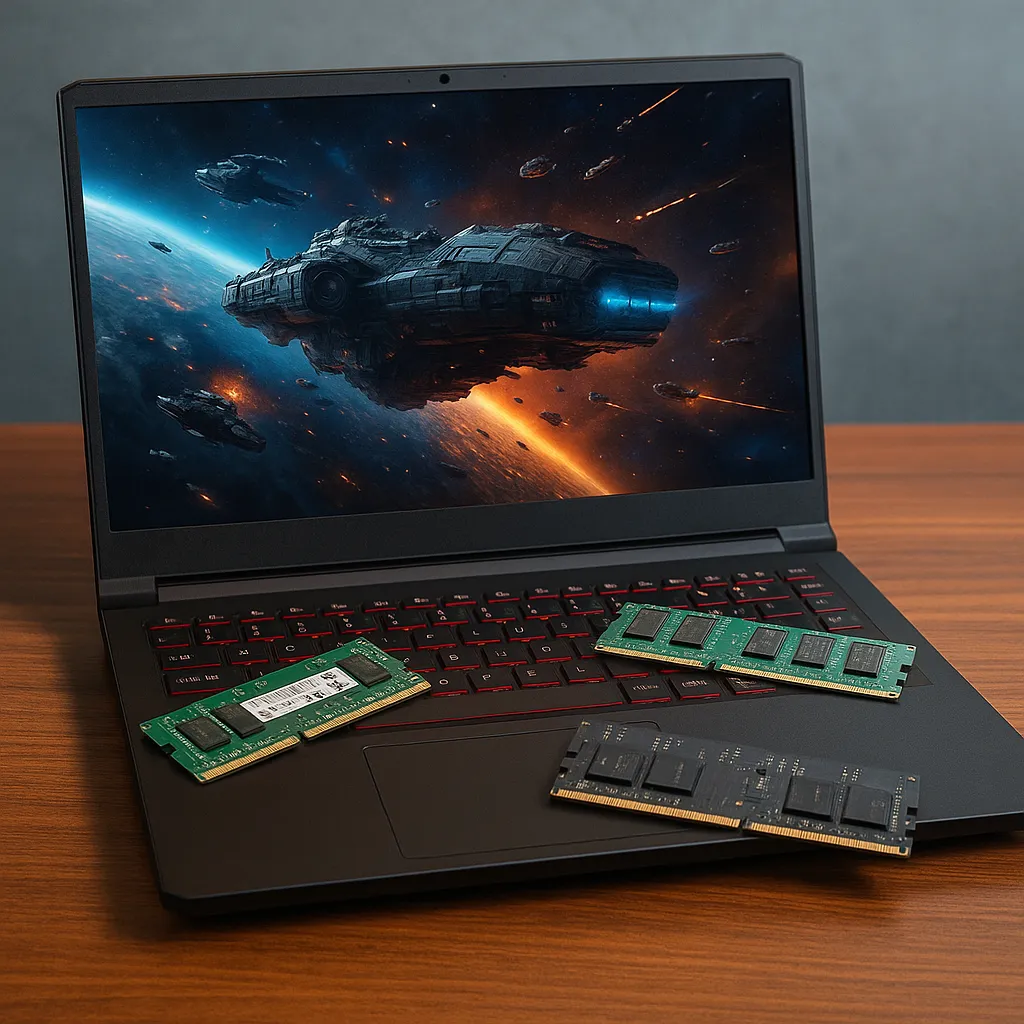Difference Between Gaming Laptop and Regular Laptop – Clear, Simple Breakdown
Disclosure: This post contains affiliate links. LaptopVoyager.com participates in the Amazon Associates Program and may earn commissions on qualifying purchases, at no extra cost to you.
Last Updated: November 2025
Gaming laptops show up everywhere, and for good reason—they look powerful, run demanding software smoothly, and offer features regular laptops don’t. But do you really need one, or is a standard laptop enough for your daily routine? Understanding the differences helps you pick the right device without overspending or giving up useful features.
👉 If you want a clearer idea of what full gaming performance looks like, check out our best gaming laptop breakdown for an easy comparison of today’s strongest models.
🔍 What Makes a Gaming Laptop Different?
Gaming laptops focus on raw performance. They come with stronger CPUs, dedicated GPUs, and advanced cooling systems, making them great for modern games, video editing, modeling, or any task that pushes a laptop hard.
Regular laptops are built around portability and everyday convenience. They’re lighter, quieter, more affordable, and ideal for browsing, schoolwork, video calls, and entertainment.
🔍 Performance: CPU, GPU, and RAM
This is where the biggest differences show. Gaming laptops use dedicated graphics and high-performance processors to run modern games and heavy applications smoothly.
• Gaming laptops: Best for new games, editing, 3D work, and multitasking
• Regular laptops: Best for everyday tasks and lighter workloads
Integrated graphics on regular laptops can run simple games, but struggle with titles that need more GPU power.
🔍 Display Quality and Refresh Rate
Gaming laptops often feature high-refresh displays—120Hz, 165Hz, or higher—which makes motion smoother and gameplay more responsive. Many also offer better color accuracy.
Regular laptops typically use 60Hz screens. They look great for work, streaming, and daily use, but don’t offer the same fast-motion clarity gamers prefer.
🔍 Cooling, Noise, and Battery Life
Stronger hardware generates more heat, so gaming laptops use larger fans and more aggressive cooling. This leads to more fan noise and shorter battery life.
Regular laptops stay cooler and quieter, and they typically last longer on a single charge—ideal for students or professionals who move around a lot.
👉 If you want to keep temps under control during longer sessions, take a look at our guide on whether a cooling pad actually helps reduce heat on gaming laptops.
🔍 Weight, Build, and Portability
Gaming laptops tend to be heavier because of their cooling systems and dedicated GPUs. Even slim gaming laptops weigh more than most ultrabooks.
Regular laptops are easier to carry and more comfortable for long days of commuting or campus use.
📌 Key Takeaways
- Gaming laptops deliver higher performance for modern games and demanding software
- Regular laptops are lighter, quieter, and offer longer battery life
- High-refresh displays are a big advantage of gaming laptops
- Choose based on what you do daily, not just raw specs
🟢 FAQs
Q: Can a regular laptop run games?
Yes, but mostly lighter or older games. Modern titles usually need dedicated graphics.
Q: Are gaming laptops good for school or office work?
They work well, but they’re heavier and drain battery faster than regular laptops.
Q: Do gaming laptops last longer than regular laptops?
They can, but heavy gaming puts more stress on components over time.
Q: Are gaming laptops worth it for casual gamers?
Only if you want smoother performance or higher settings. Casual players can get by with a standard laptop.
✅ Conclusion
The core difference between gaming laptops and regular laptops comes down to performance versus portability. Gaming laptops are far more powerful and better for demanding tasks, while regular laptops are easier to carry, last longer on battery, and work well for everyday use. The right choice depends on how much power you actually need and how you use your laptop day to day.







